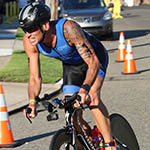Learn how to understand aerodynamics and rolling resistance and why they are important when it comes to selecting the right wheels and tires for training and racing.
If you've ever ridden deep rim wheels on a gusty day, you've felt the pull of the wind on your bike. Or you might have put on new tires and felt how they really gripped the road when making a tight turn. Understanding the basics behind wheels and tires can help you make informed choices on what to buy.
Aerodynamics at Low Speed
Bicycles travel at very low speeds compared to airplanes or Formula 1 race cars, so not all of the same aerodynamic principles apply. When optimizing bike tires and wheels, bicycle manufacturers use computational fluid dynamics modeling and also test their gear in low-speed wind tunnels. CFD modeling lets us "see" how the air molecules move around objects. This is an important factor when designing bicycle components meant to reduce surface friction caused by wind resistance.
Just how important are aerodynamics? Bicycle manufacturer Specialized built its own in-house "Win Tunnel" to aid in design and optimization of bicycles, wheels and tires. Aerodynamics are a key component that of speed. The more aero something is, the faster it will move given the same amount of effort.
Rolling Resistance
In addition to aerodynamics, the rolling resistance of the tire on the road also impacts speed and handling. Rolling resistance is the friction between two surfaces where one is stationary—the road—and the other is rolling on top of the first—the tire. If we reduce the rolling resistance—the friction between your tire and the road—the same object with the same push will roll further.
When riding performance tires with a low rolling resistance, the same effort by you (e.g., 200 watts) will result in your bike rolling further down the road.
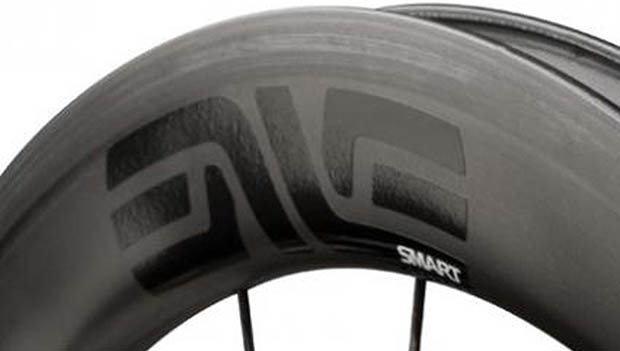
Wheel Depth
Deep rim wheels allow the air to "stick" to the sides of the wheel for a longer time. When this occurs, the friction of air on the wheel and the turbulence created at the rear edge of both sides of the wheel is also reduced. This is also known as drag factor. The lower the drag factor, the faster the wheel.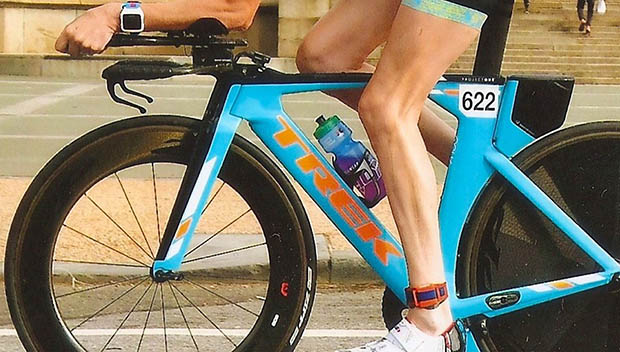
Wheel Size Front and Back
You may have seen riders with different front and rear wheels. The front wheel choice has a bigger impact on the bicycle's handling ability. While a disc wheel is the fastest aerodynamically, using a disc in front makes a bicycle hard to steer. You will likely only see front and rear discs on track bikes. For outdoor races, such as time trials and triathlons, you will often see a deeper rim front wheel and a rear disc. If it is windy, you may see riders opt for a shallower front wheel and a deep rim rear wheel to improve handling.
Due to the dangers presented by using a disc wheel on the road, front disc wheels are prohibited in road cycling and triathlon.
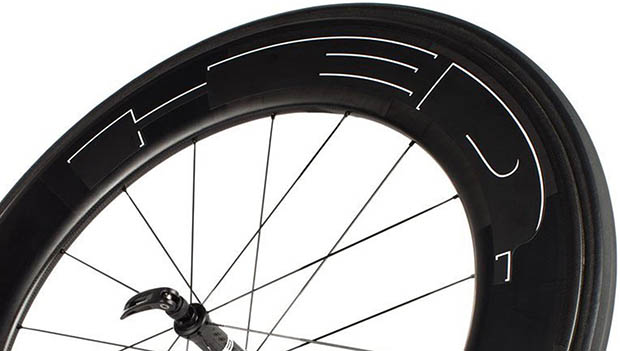
Wheel Width
Recent trends have been to go back to wider wheels. Wider wheels allow for wider bike tires, which have been proven to offer lower rolling resistance and therefore are faster than narrower tires. It is important to pay attention to the width of your wheels and use tires that are within the approved with range for the wheel. Both tire and wheel manufacturers provide recommended optimal widths.
Wheel Rim Shape
Current trends for choosing wheels are not only going for a deeper profile but also wheels that are wider at their midsection and blunt at their spokebeds. This is to reduce air turbulence drag as it moves passed the wheel while still allowing for good handling.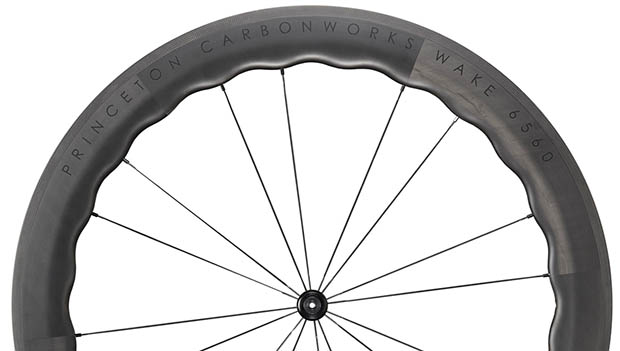
Dimples and Sawteeth
Dimples on the surface of wheels—like those found on a golf ball—allow air to better adhere to the sides of the wheel. This creates an air "cushion" around the wheel or a boundary layer. The air flowing against air, instead of air flowing against the wheel surface, reduces turbulence.
A wheel with a "sinusoidal" profile is designed for improved handling in windy conditions.
The different depths across the interior edge of a wheel improve aerodynamics by offering characteristics of both deeper- and shallower-depth wheels. The goal of this shape is to make the wheel feel less "squirrelly."
Crosswinds and Deep Wheels
Unless you're riding in a wind tunnel, you will never experience a direct headwind for the entire duration of an event. This is why most deep wheels are optimized to perform in real-world conditions where the wind is "attacking you" at various angles from the side. Crosswinds can affect handling, but they do not change aerodynamics. The very design features that make wheels aerodynamic also make them fast in windy conditions.
Pro Tip: The more you practice riding with your deep-profile race wheels in variable wind conditions, the more comfortable and therefore the faster you'll be on race day.
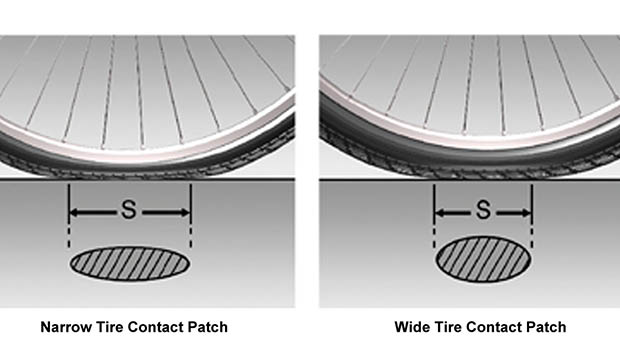
Where the Rubber Meets the Road
Though it seems counterintuitive, wider tires have smaller contact patches compared to narrower tires. If you think about how your weight on the bike pushes the tires into the road, a wider tire will spread out wider across the width of the tire but the length of the contact patch will be shorter. This decreased length of the contact surface means decreased friction between the road and your tire.
Continental states that its 25mm tire has 10 to 15 percent less rolling resistance than its 23mm tire. A 23mm tire inflated to 123psi, a 25mm tire inflated to 94psi and a 28mm tire inflated to 80psi all have the same rolling resistance.


